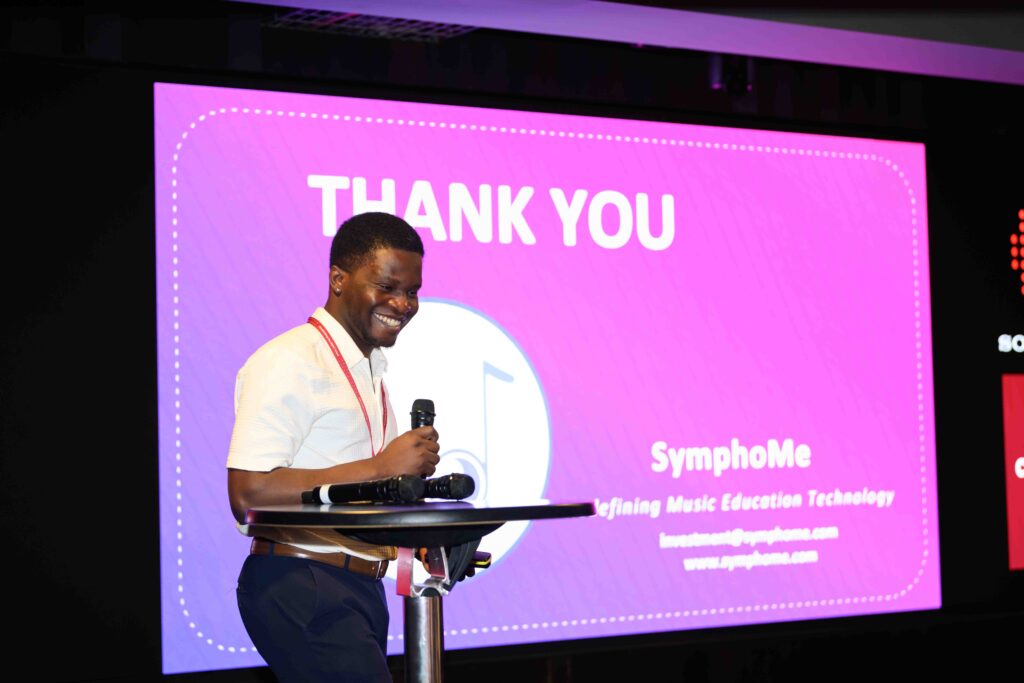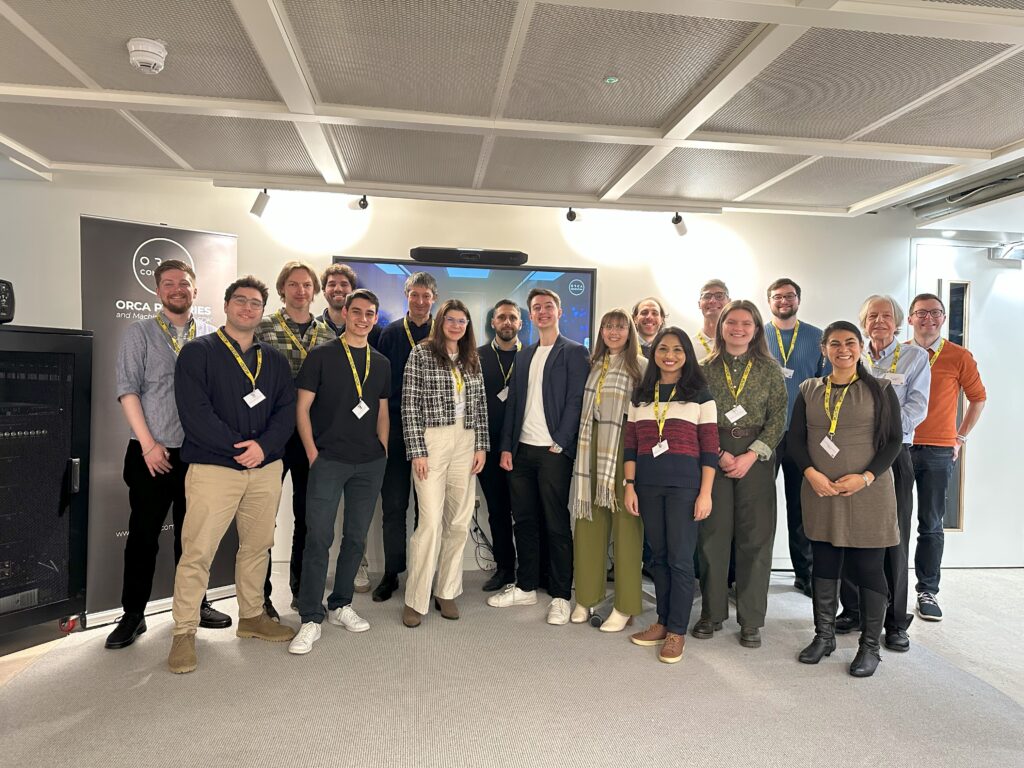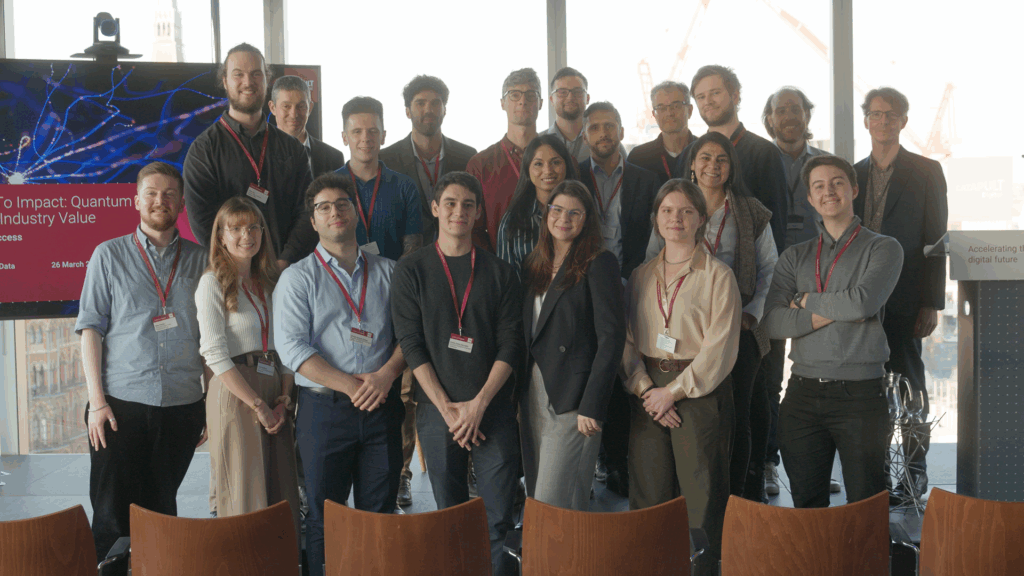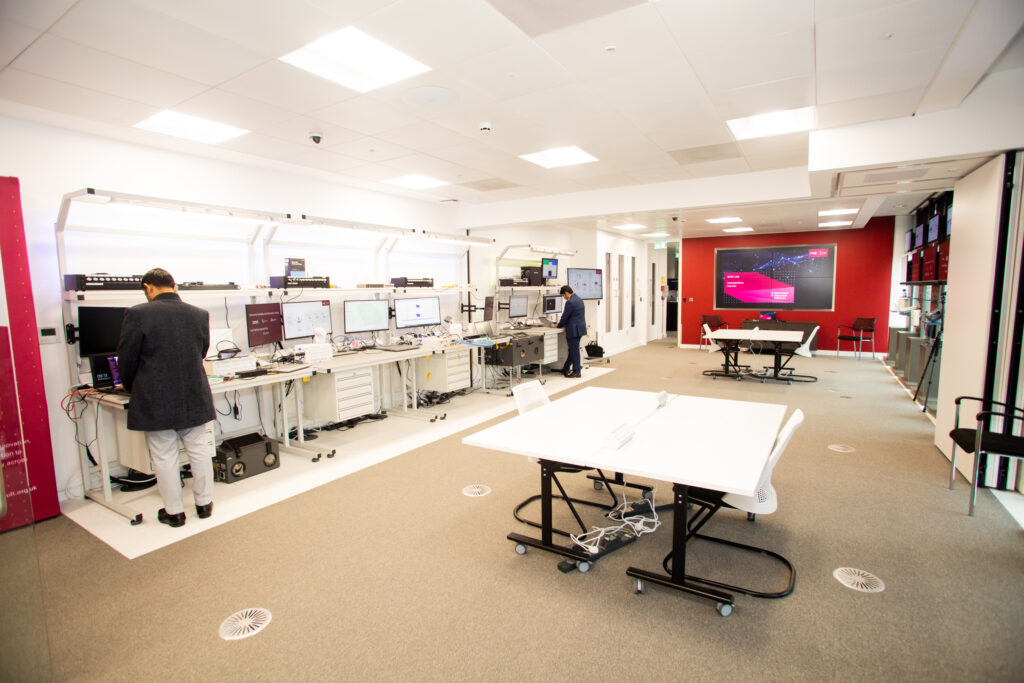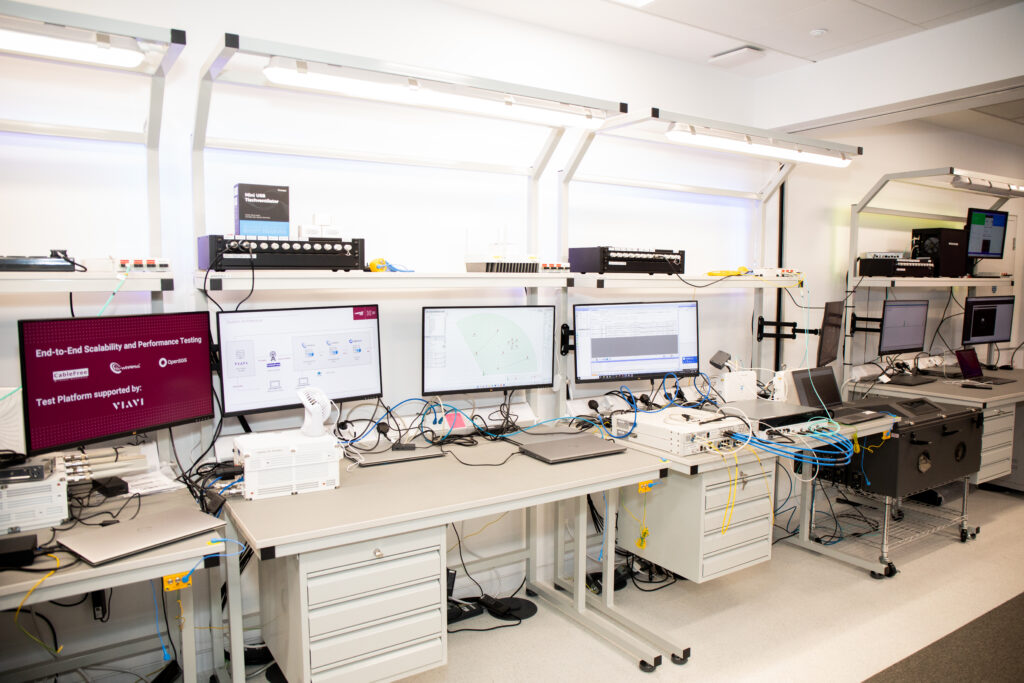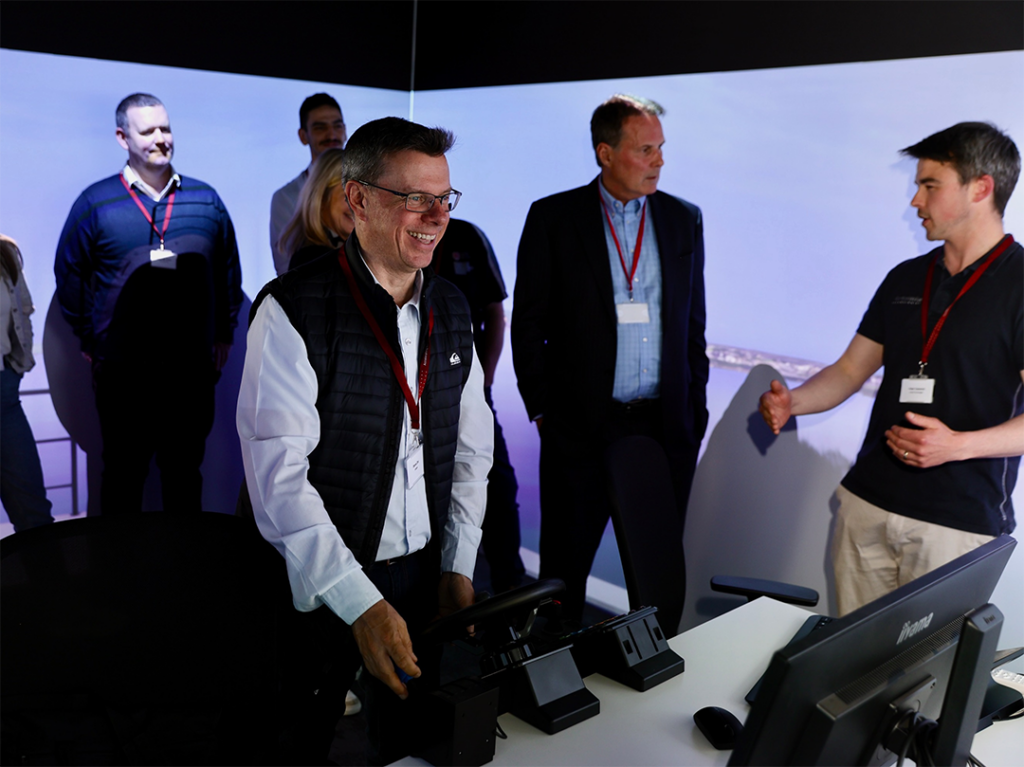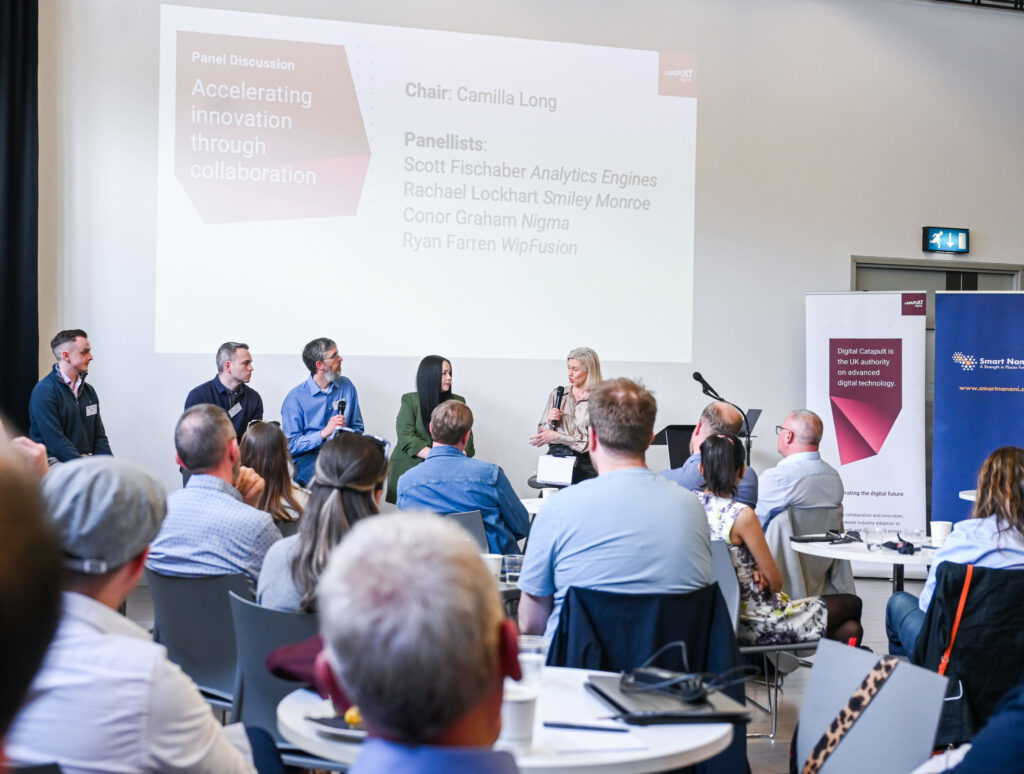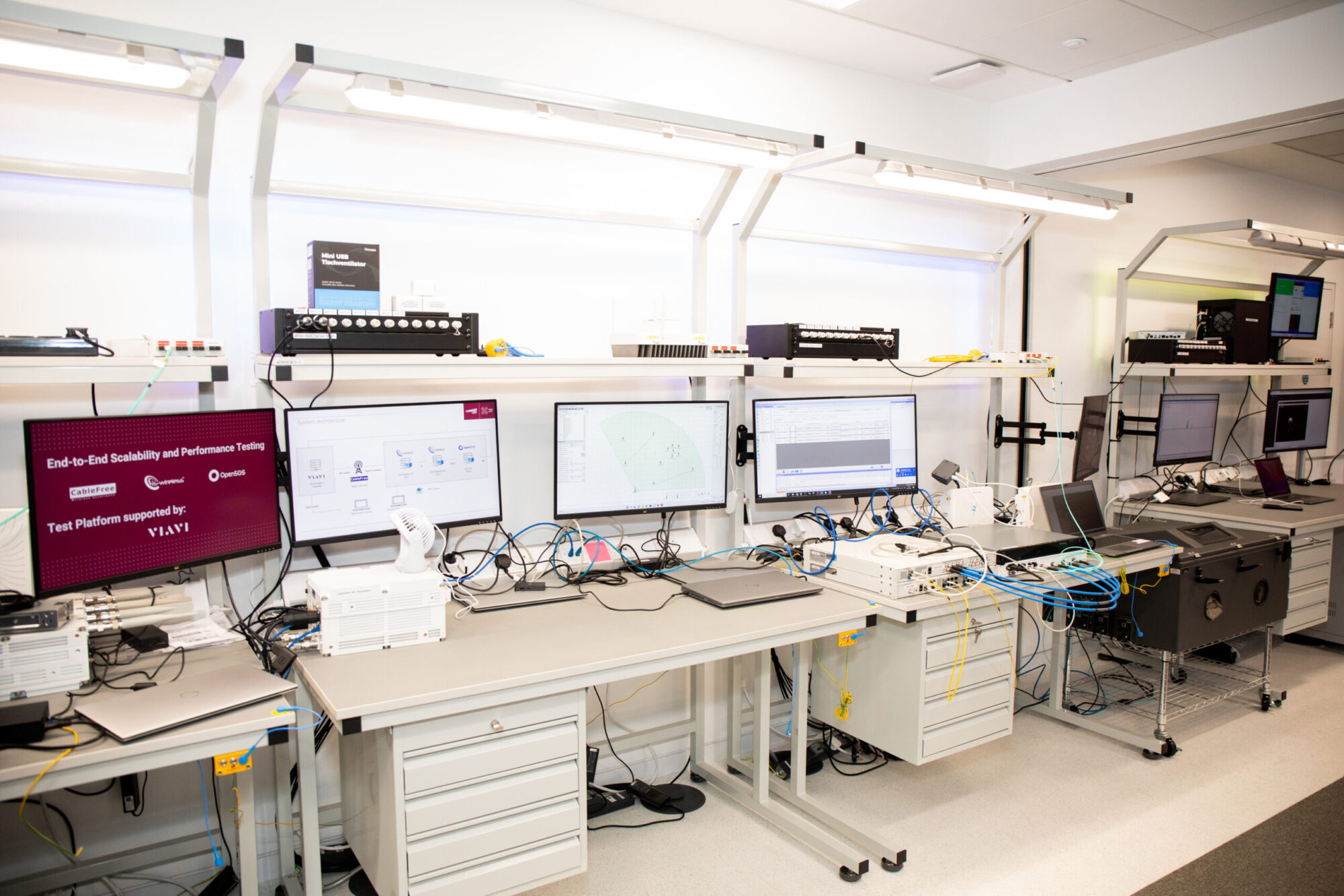Xhafer Krasniqi, Senior 5G Technologist at Digital Catapult and Farhad Mehran, Senior RAN Verification Engineer
As the SONIC Labs programme progresses, we are continually developing our technical capabilities to conduct extensive testing and performance evaluation and validation for the future Open RAN. In partnership with Ofcom, we recently announced the opening of our new Open RAN testing facilities in the UK and we’re excited to be working with vendors to bring their Open RAN products to SONIC Labs for collaborative testing and integration of their disaggregated RAN components.
Test and Measurement (T&M) Capabilities
As the interest for developing Open RAN components increases, the integration complexity of these components also surges. This in turn drives the need for a higher level of certainty, performance and interoperability warranties and having to rely more on T&M tools. Over the last year, one of the key focus areas for the SONIC Labs team has been to develop capabilities that will allow us to effectively conduct the testing and performance evaluation of the integrated Open RAN components.
In addition, we’re focused on developing an automated testing process, which will simplify and reduce testing time and will help perform test cases efficiently. For example, one of the main challenges is how to automate the testing process using advanced T&M platforms.
How an advanced T&M platform can help to accelerate the integration and automate the testing process for future Open RANs
The successful roll out of Open RAN requires Mobile Network Operators (MNOs) to be able to meet their network Key Performance Indicators (KPIs) in a true multi-vendor environment. This can be achieved if the Open RAN components and their interfaces have been tested successfully in advance. Within the SONIC Labs programme, our objective is to support the development of working end to end Open RAN systems and help products mature through earlier end-to-end integration and interoperability testing of fully formed Open RAN systems. To successfully run these tests before deploying them in a live network, using advanced T&M tools is critical to avoid troubleshooting costs and performance issues after the network roll out.
There are a number of major players in the industry that have developed T&M tools for Open RAN, with some of them having developed tools that can be used to build the needed automated test process. The T&M vendors play an active role in contributing to the development of Open RAN specifications and how Open RAN products can be tested to ensure robustness of integration, interoperability between components, and meeting of the performance requirements.
Some of the key areas that SONIC Labs team will focus in validating during the programme are as follows:
- Multi-vendor interoperability tests, including validation of the disaggregation of O-RAN Centralised Unit (O-CU) and O-RAN Distributed Unit (O-DU) components.
- Individual disaggregated Open RAN tests, such as O-RAN Radio Unit (O-RU), O-RAN Centralised Unit (O-CU) and O-RAN Distributed Unit (O-DU) components to ensure individual components are optimised and tested correctly.
- Functional and non-functional testing on a system level.
- Testing of protocols and open interfaces to ensure compliance with 3GPP and O-RAN standards specifications.
- Performance monitoring of open interfaces and protocols as part of the non-functional testing.
- Developing a DevOps-centric automated testing framework for interoperability and End-to-End testing.
Within SONIC Labs we have organised a number of Open RAN tests, mainly indoors, through different cohorts and phases with different themes and focuses.
The focus of these tests has evolved gradually from functional testing and validation to prove the concept, to multi-vendor functionality and non-functionality testing and moving to more mature and performance-related testing with full RAN Intelligent Controller (RIC) diversity.
Our Test and Measurement Portfolio
Digital Catapult is using different T&M tools from different vendors with different capabilities and for different levels of tests and benchmarking. We will continue to enrich our T&M portfolio through SONIC Labs and other 5G programmes in order to verify and evaluate 5G Open RAN integration, interoperability, security and performance under real-world conditions.
Below is a current snapshot of T&M equipment and solutions we’re using from leading test and measurement vendors such as Keysight, VIAVI, Rohde & Schwarz, including:
- A mobile network scanner used for obtaining deep real-time network insights and analyse user experience
- A handheld spectrum analyzer to make the field measurements simple and more efficient
- A test tool for 5G network end to end testing, 5G device analytics etc, including test plan execution, analysis and reporting
- Automatic benchmarking and evaluating the performance of 5G devices, O-RAN deployments and base stations in a laboratory environment
- A handheld network tester for testing the health of a network from E2E, including fibre optic channels, metro/core, data centre interconnect and quality of PTP signals
- A scalable test system to support 5G base station development and reduce time to market, used for functional, system integration and capacity tests in the lab and emulates thousands of mobile devices, across multiple cells.
- A 5G core network emulator to provide a full test of 5G base stations for both NSA and SA modes
- A Radio Unit emulator which covers a wide range of test capabilities, allowing customers to ensure conformance, interoperability and performance testing
- User Equipment/device/handset emulator to support 1000s of UEs in 4G and 5G
- Data traffic emulator to support generation of data traffic for the purpose of stress network testing.
What’s next?
We will continue with the enrichment of our test and measurement portfolio by obtaining an O-DU emulator, RIC tester and a vector signal transceiver module (VSA/VSG) to provide continuous wave to 6 GHz with up to 200 MHz bandwidth. With these additions we will be able to emulate hundreds of DUs to validate O-CU functionality, performance and scalability over the higher-layer split midhaul interface, optimise RAN resources, reduce signalling, improve capacity, as well as being able to generate and analyse a complex representation of various modulated signals, known as IQ vector signals, to check device transceiver performance and functionality.
If you’re interested in finding out more about the SONIC Labs programme and the latest developments, register your interest on our website.




























